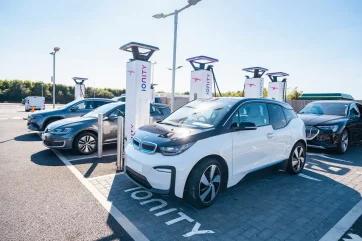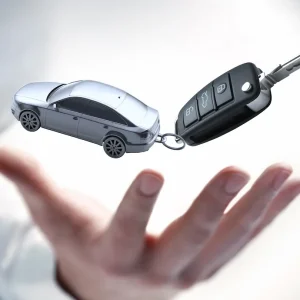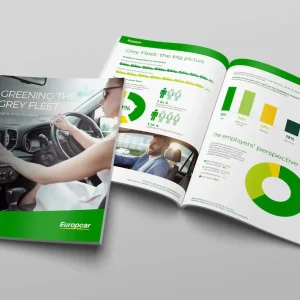
“It’s just this gap, widening, between on-road charging and home charging,” says Ashley Tate, managing director at Allstar Chargepass, about the cost difference facing EV drivers and operators.
The company’s winter 2024 ‘All Costs’ report, which takes data from “hundreds of thousands of charges taking place at home and in public,” says those conducting a 50kW charge, twice a week, paid 28p per kWh if they charged at home and 70p if they used the public network. The firm reckons this works out to about £2,000 per year for the former and roughly £3,300 for the latter.
Allstar is not the only organisation to point out the discrepancy. Using Ofgem-capped pence per kWh rates, the RAC calculated in May that drivers exclusively using rapid and ultra-rapid chargers were looking at 24p per mile, compared to 7p per mile for those using a 7kW home charger and an Ofgem-capped tariff. Petrol and diesel worked out at 17p and 18p per mile respectively.
The difference is stark and underscores a reality that has existed for some time: never mind the practicality of trying to top up an EV without a home charger – it is also a lot more expensive.
Energy prices rocketed in 2022 after the Ukraine war began, but they have gradually declined, while the relative simplicity of home charging, along with developments in the way it happens, have helped to quash the costs.
“Home is cheap because the infrastructure’s there,” says Tate, “we are not generally putting in new wires, we’re not having to upgrade any local substations. It’s just a simple, slow overnight charger, and a fairly low cost in the grand scheme of things. About a thousand pounds, and you’ve got yourself a home charger.”
Moving on
ChargeUK, which represents public charge point operators, estimates the UK currently has around 700,000 home chargers and, among those, there will likely be no shortage of basic 3kW wallboxes – glorified trickle chargers for those of us used to preserving a dormant petrol or diesel car’s 12-volt battery. The hardware has moved on, though, and the smartest of today’s smart chargers can now monitor the grid for the cheapest and cleanest energy – typically in the wee hours when demand is lowest – then kick in accordingly to take advantage. They can also top up the battery to a set percentage by a certain time, say, 80% by 7am.
Tariffs, too, have advanced to better suit EV drivers. Several big energy companies now have plans that work almost exactly as the aforementioned smart chargers do, and lower costs for off-peak weekend charging are also rumoured.
“Every energy supplier I’ve spoken to wants to play in this EV tariff space,” says Tate, “they all have something on the cards.”
He adds that certain suppliers are hamstrung by legacy systems, which permit only flat-rate billing, but some are buying in flexible systems from rivals more used to the nuances of electric cars. He also believes smart overnight charging is a theoretical silver bullet.
“A lot of people say, ‘the grid can’t cope’. We could do no upgrades to the grid infrastructure as it is today, and we’d have enough generation if we used it smarter. If we could all charge at off-peak times, and if every single vehicle on the road today was electric, we wouldn’t have a problem.”
Home charging will also be cheaper from 1 July, when Ofgem lowers the price cap. The average cost of household energy is due to fall by 7%/£122 to £1,568 per year – its lowest since March 2022 – and follows a sustained drop in wholesale gas prices. It is said to represent a saving of around £10 per month with bills expected to be about £500 cheaper than they were last summer.
Public pressure
Public charge point operators do not have those luxuries. The infrastructure costs alone are staggering and, despite its rapid growth, the initial expense of getting the network up and running is immense.
“When you’re talking about the rapid hubs, which are either on motorways or elsewhere, to get that bank of 10/12 charge points in place, you are securing a huge grid connection,” explains ChargeUK CEO, Vicky Read, who stresses that rapid motorway charging sites represent the peak, not the average for public charging, “we’re building for the future, so we’re purchasing in huge capacities, which will be required five or 10 years down the line.
“Typically, MSAs [motorway service areas] are in the middle of nowhere. You are building a great, big connection through rural countryside, and that’s a huge investment… We’re acutely aware that we need to try and make this as affordable as possible, and what we don’t want is, having made the investment getting the infrastructure in the ground, that people are put off by prices.”
Compared with home charging, VAT is also stacked against public charge point operators. It is 5% for the former and the full 20% for the latter. Various organisations, including ChargeUK, the AFP, and even recommendations in an electric vehicle report by the House of Lords, have called on the government to make it 5% across the board, but it has refused to do so, claiming it “would impose additional pressure on the public finances”.
Rapid-charge hubs have also been hampered by what Read says is an astronomical increase in standing charges.
“The grid is being upgraded ready for the energy transition, and some regulatory changes were made to try and spread that cost,” she explains, “an unfortunate side effect is that the standing charges have gone through the roof. They’ve gone up by about 300% in some cases.
“There are two problems with that: the first is that you don’t typically find out what the costs will be until you’ve energised the sites. That means you’ve got to try and estimate a very long way ahead of when you’re deciding whether it’s a viable commercial option or not. The second is that most operators are investing for 2030/2035 in terms of the energy required at a site, so you might buy a grid connection that will support 20 charge points knowing full well that you’ll probably only install six this year, except the standing charge is charged on the capacity of the connection, rather than the utilisation. So we are paying the rent for something that we’ll be using in 15 years’ time.”
All this translates to much higher prices for fleets using rapid chargers and, in May, the AFP claimed the cost of motorway charging, in particular, was a deterrent for operators considering EVs.
“We’re looking at a situation where using a public charger on the motorway might be 80 pence per kWh compared to perhaps a quarter of that or even less for people who have a charger on their drive,” says chair, Paul Hollick.
“It’s a difficult situation. If you have drivers who live in a terraced house or an apartment so can’t install a charger at home, and who don’t often visit a location with car park or depot charging, then there is no choice but to use retail charging and it is exponentially more expensive.”
Street level
The organisation is calling for a greater focus on lower-cost on-street public charging to counter this, which it believes will make EVs all the more feasible for employees who lack access to home chargers.
“Really, what we want to see is a massive increase in on-street charging happen very rapidly and this is something that we would very much urge whichever government is elected this year to examine,” adds Hollick.
The AA’s May ‘EV Recharge’ report claimed the cost of off-peak slow charging “typically found at the kerbside in residential streets” fell by more than 10% the previous month to 33p/kWh, while peak slow charging fell by more than a quarter, from 72p to 53p.
ChargeUK says the UK now has about 60,000 public charge points and that’s increasing by about 45% a year – leaving it on track to meet the government’s target of 300,000 by 2030. Costs are expected to reduce as numbers grow and the infrastructure begins to pay for its initial outlay, some of which, Read believes, will come from good old-fashioned competition.
“We are trying to run businesses, so obviously, there’s a balance to be sought between investment on infrastructure and the price point. As time goes on and there’s more and more availability, I think competition will do a certain job [to reduce costs].”
Tate believes a reduction in public charging costs is “inevitable,” as providers transition from setting up the network to the maintenance phase but cautions fleets not to expect parity with the cheapest home charging.
“Once you’ve upgraded the infrastructure and all you’ve got to do is maintain it or replace it with similar physical infrastructure, you are not having to then dig up half of somebody’s car park or change the actual grid infrastructure.
“I am not saying it’ll get phenomenally cheaper, but it will get cheaper. But I don’t ever see a world where public charging is going to cost less or even the same as home charging.”





